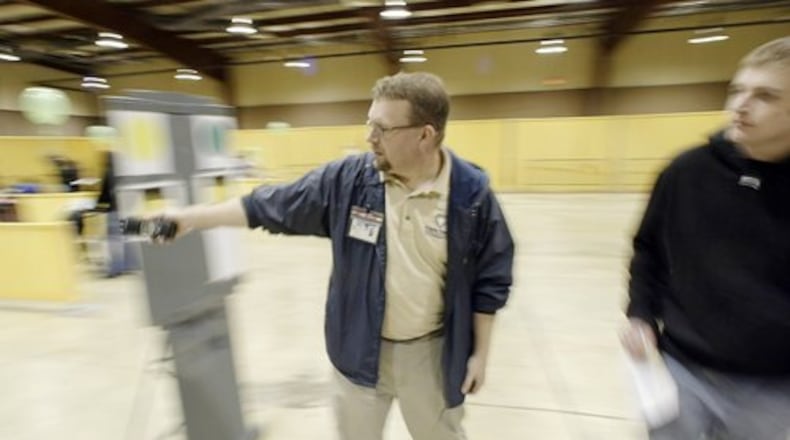“It’s a 20-plus year old program that came into being as we looked at how do we make sure that we have volunteers that are prepared to provide support in the event of any kind of an emergency, whether it’s a disaster, man-made or natural,” said Tracy Clare, Public Health’s Ohio Medical Reserve Corps coordinator.
The program brings volunteers together to train them ahead of time, so when an emergency occurs, they already have the skills needed to be a volunteer in that moment, Clare said.
The program formed after the Sept. 11, 2001 terrorist attacks, according to Jillian Botteicher, regional public health coordinator for the West Central Ohio Region of the Ohio Medical Reserve Corps.
“There was so much interest in people wanting to help,” Botteicher said.
The Medical Reserve Corps works in conjunction with Citizen Emergency Response teams and the Red Cross, she said.
“All of those are volunteer organizations, and there are mechanisms across the state and the country that allow all three of those volunteer organizations to work together,” Botteicher said.
Locally, volunteers with the Ohio Medical Reserve Corps have helped provide aid during the COVID-19 pandemic and the 2009-2010 H1N1 flu pandemic, as well as following the 2019 Memorial Day tornadoes, Clare said.
Credit: Chris Stewart
Credit: Chris Stewart
Clark County’s Medical Reserve Corps also has a crisis response action team that provides mental health support and crisis counseling to first responders or disaster survivors, Botteicher said.
That response team provided support following the 2019 Oregon District mass shooting, she said, along with other types of mass casualty events in the past.
Other volunteers with the Medical Reserve Corps helped out by operating informational phone lines for people to call in if they had questions during the COVID-19 pandemic.
Part of why the Medical Reserve Corps is vital is because it allows for agencies to provide pre-coordination training to volunteers, said Dan Suffoletto, Public Health’s public information manager.
After a disaster, people in the community may want to help out, but it’s not as efficient to have unknown people sporadically showing up to the scene of a disaster as it is to have a system organized ahead of time, he said.
“The people have to be trained. They have to be vetted, so there’s a whole process,” Suffoletto said.
The program’s annual training helps volunteers understand the response process for different types of emergencies. The training includes an online training and then an in-person regional training day once a year.
“They have the tools (and) they have the knowledge for how we respond,” Clare said.
Volunteers don’t have to be from the medical field to be part of the Medical Reserve Corps as there are logistical roles, such as directing traffic or providing non-medical support to people, available for people who want to be involved.
For volunteers who are doctors, nurses or other medical professionals, they have to keep their licensure up-to-date, Clare said.
Volunteers signed up with the Medical Reserve Corps are also not required to be at every incident of a public health emergency or natural disaster. They will still be part of the volunteer registry for future emergencies.
“That’s why it’s important to build a broader base of people,” Suffoletto said. “Incidents happen at any time and you need to have enough people who might be available to then help out as the time allows.”
MORE DETAILS
For more information or to sign up, call Public Health at 937-225-5713 or visit ohioresponds.odh.ohio.gov.
Credit: Jim Noelker
Credit: Jim Noelker
About the Author





